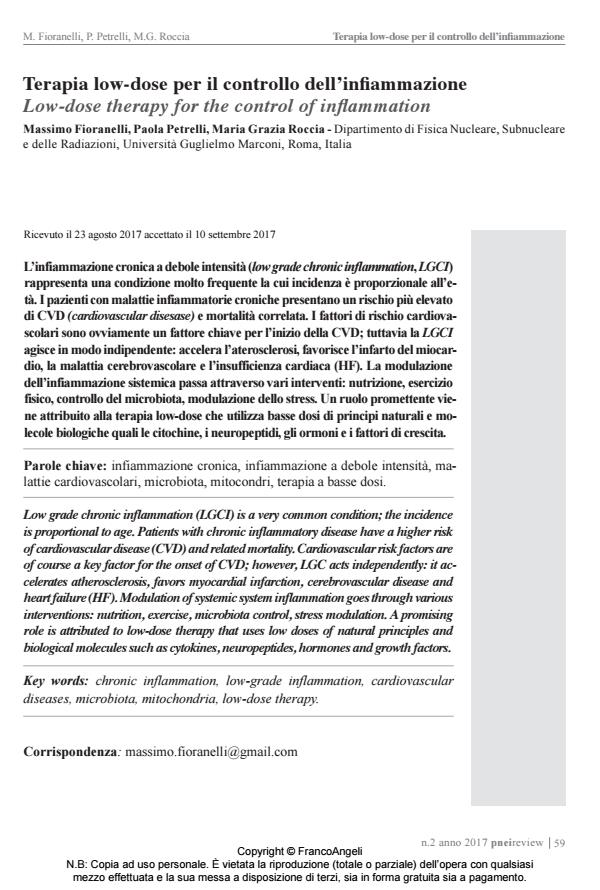Terapia low-dose per il controllo dell’infi ammazione
Titolo Rivista PNEI REVIEW
Autori/Curatori Massimo Fioranelli, Paola Petrelli, Maria Grazia Roccia
Anno di pubblicazione 2017 Fascicolo 2017/2
Lingua Italiano Numero pagine 12 P. 59-70 Dimensione file 1120 KB
DOI 10.3280/PNEI2017-002006
Il DOI è il codice a barre della proprietà intellettuale: per saperne di più
clicca qui
Qui sotto puoi vedere in anteprima la prima pagina di questo articolo.
Se questo articolo ti interessa, lo puoi acquistare (e scaricare in formato pdf) seguendo le facili indicazioni per acquistare il download credit. Acquista Download Credits per scaricare questo Articolo in formato PDF

FrancoAngeli è membro della Publishers International Linking Association, Inc (PILA)associazione indipendente e non profit per facilitare (attraverso i servizi tecnologici implementati da CrossRef.org) l’accesso degli studiosi ai contenuti digitali nelle pubblicazioni professionali e scientifiche
L’infiammazione cronica a debole intensità (low grade chronic inflammation, LGCI) rappresenta una condizione molto frequente la cui incidenza è proporzionale all’età. I pazienti con malattie infiammatorie croniche presentano un rischio più elevato di CVD (cardiovascular disesase) e mortalità correlata. I fattori di rischio cardiovascolari sono ovviamente un fattore chiave per l’inizio della CVD; tuttavia la LGCI agisce in modo indipendente: accelera l’aterosclerosi, favorisce l’infarto del miocardio, la malattia cerebrovascolare e l’insufficienza cardiaca (HF). La modulazione dell’infiammazione sistemica passa attraverso vari interventi: nutrizione, esercizio fisico, controllo del microbiota, modulazione dello stress. Un ruolo promettente viene attribuito alla terapia low-dose che utilizza basse dosi di principi naturali e molecole biologiche quali le citochine, i neuropeptidi, gli ormoni e i fattori di crescita.
Parole chiave:Infiammazione cronica, infiammazione a debole intensità, malattie cardiovascolari, microbiota, mitocondri, terapia a basse dosi.
Massimo Fioranelli, Paola Petrelli, Maria Grazia Roccia, Terapia low-dose per il controllo dell’infi ammazione in "PNEI REVIEW" 2/2017, pp 59-70, DOI: 10.3280/PNEI2017-002006